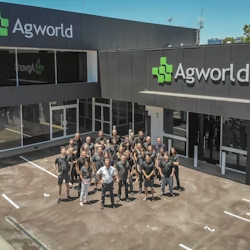This article was first published by The Safe Food Alliance
Growers throughout the USA, and indeed most countries, are well aware of the need to provide their clients as well as the final consumers with information about where their food comes from and how it was grown. Stakeholders throughout the food chain now have a vested interest in displaying transparency because of the increased demand for information by consumers as well as certification agencies.
One of the reasons for this is the number of prolific food scandals we have seen in recent years, from strawberry issues (needles found in fruit) in Australia to the melamine incident (food components being adulterated with melamine) in China and many others around the world. In most cases, these scandals show that it only takes 1 problem to taint an entire industry and create a ripple effect that will be felt for many years.

I read a very interesting article by Vincent Desmond recently, who is CEO at the UK based Chartered Quality Institute, in which he explores what needs to happen to prevent things going wrong in the supply chain. One of the most interesting points he raises in his article is the issue of poor regulation and over-standardization, which “encourage a compliance mentality and culture, rather than transparency, risk management and, of course, a sense of doing the right thing for the consumer”. Mr. Desmond states that: “Lessons can be learned from the financial sector, which was heavily focused on compliance and regulation, but still managed to do the wrong thing.”
I find this a fascinating parallel and indeed a good standard that we as an agricultural industry should keep ourselves to. Rather than waiting for new food safety standards to be mandated or export regulations to become law, we should proactively work on exceeding the demand for transparency in the marketplace. We often see that, when mandates are imposed, the cost of compliance becomes much higher unless compliance is already part of the workflow. Farmers are also unable to demand a premium for their product when transparency is mandated across the industry they operate in.

A good example of the benefits of proactive traceability and transparency is the US (and global) cotton industry. By self-imposing a quality control system, called the Better Cotton Initiative, growers have been able to negotiate better contracts for their cotton and get up to $3 per bale extra. Currently, 19% of the world’s cotton is produced through the BCI and growers have been able to stave off a forced regulatory burden by self-imposing the BCI. Our family produces BCI-accredited cotton on our farm in California as well and it has brought us some very interesting opportunities!
At Agworld we see that our clients, like Williams, CA based Vann Brothers for example, are able to unlock profitable new opportunities by focusing on the quality of the product they produce and being able to provide their clients traceability through the Agworld platform. It’s all about having the right information available in a format that allows for it to be utilized in an easily-digestible form.

Got what it takes to join the Agworld team? We’re looking for talented individuals to help us deliver innovative solutions in agriculture.
Or, to put it in Blake Vann’s words: “Our niche as a company is that we’re very much centered around food safety and we put a lot of time into the quality and safety of the food that we provide. Information is everything but these days but there is too much information in Ag, and it’s about having the right information to make decisions. This is what Agworld offers us.”
At Agworld we’re passionate about food safety as well as helping farmers avoid additional workload from the regulatory burden they face on a daily basis. By tracing inputs and other key in-field data on the Agworld platform throughout the season, our clients can easily create those reports they need to file with regulators. However, I agree with Vincent Desmond and think that we together, as an industry, should use these kinds of reporting capabilities not only where we are legally obliged to do so, but pro-actively where we are able to do so. It’s only by focusing on transparency, risk management and a sense of doing the right thing for the customer, that we will be able to avoid poor regulation and over-standardization for America’s food producers.




